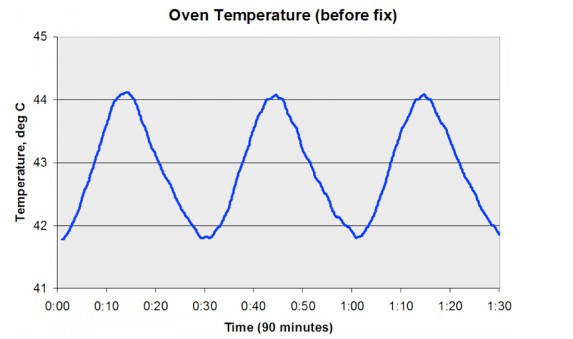Everything starts with this simple and harmless sentence: "Can you remove a screw for us?"
I guess it’s because the laboratory member didn’t have the correct screwdriver. This should be a simple task that can be completed in five minutes; but my luck was not so good, and I used a carbide dental drill bit that was already dented. A new slot is cut out on the screw head to allow the screw to be removed smoothly.
And when I removed the screw, I found out why the experiment wanted to do it-under the casing of the instrument locked by the screw, there was dry salt and corrosion.
Here I should tell you more about this instrument. It is used to measure the four physical characteristics of liquid samples; the sample to be tested is passed through an independent pump, with high pressure (700PSI) and constant flow rate (each Minute 1.0 ml) supply. An oven in the instrument is equipped with key sensors, capillaries, filters and related pipelines, and the temperature is controlled at 37 degrees Celsius by a proportional-integral-derivative controller (PID).
I cleaned the instrument and found two leaky and corroded valves in a mess, and then ordered a replacement for a price of $500; at the same time, I also polished the surface of the corroded steel plate and repainted it to avoid further Corroded.
After installing the new valve that arrived, I vented the air from the system and confirmed that there was no leakage. The first test showed that three of the measurement functions worked well, but the fourth measurement function of viscosity showed an unstable baseline: a strange sinusoidal disturbance appeared and lasted for 30 minutes. .
What is causing this interference? After calling the instrument manufacturer to inquire, the answer I got was: "If two valves are broken, then the third one may be too;" I bypassed all three valves, but this change is no different. It is not the valve. problem. I bypassed several other pipeline parts, one at a time, and the sine wave interference still persisted.
Read the user manual carefully, it is pointed out that the unexhausted air in the system may cause the baseline to be unstable; but there is no difference after disassembly and cleaning. This test seems to rule out the possibility of the air inside the system, and how can air bubbles cause sine wave interference?
Taking a week away from this problem will give me some time to think; I once again ask myself: "What causes a long sine wave?" Will it be aliasing? It's not like it, maybe it's not the problem of the instrument itself; or maybe it's the pump that supplies fluid to the instrument, which oscillates for 30 minutes at low flow rates? The same is unlikely.
I think the only possible cause of this low-speed interference is temperature. This idea has appeared a few times before, but the temperature displayed by the temperature controller has always been 37°C; perhaps I should not trust the reading. Using an independent thermometer to measure the temperature of the oven, it showed a sinusoidal change between 42°C and 44°C within 30 minutes; I might finally be in the right direction!
Obviously I have encountered an underdamped, "marginally stable" control loop-the critically stable control loop oscillates, and the amplitude will not increase or decrease over time (as shown in the figure below).

It seems that there is a problem with the temperature controller; before disassembling the hardware, I decided to try a software Solution-automatically adjust the control loop and force the controller to calculate the best PID parameters for the process; this re-adjustment is effective, and the temperature oscillates After disappearing, the viscosity measurement baseline returned to stability, which finally made the user very satisfied.
But I remember that the first circuit design course I took a long time ago was taught "Don't be complacent with your circuit design results, find out how it works smoothly." I still wonder why the PID parameters must be changed. I think I just covered up a hardware problem; besides, my concern is that the oven temperature is still 6 degrees higher than the set point.
Then I suddenly realized: It seems that the temperature sensor is not properly coupled with the oven in terms of temperature. Now it seems that it is time to disassemble the hardware. That's it! Disassembly and testing showed that the fixing screws of the sensor were missing, so the temperature sensor was maintained at a stable 37°C, but the oven temperature was relatively high and kept oscillating.
I probably never know where the screw that fixes the temperature sensor went, or even when it disappeared; but after fixing the sensor correctly, all the problems were solved. The temperature of the oven is kept stable at 37°C. More importantly, the baseline of the instrument's viscosity measurement function is also completely stable.
The lesson learned in this case is: don’t believe everything you read, even the meter readings; also, if there is an “error†that is a long time constant, it is probably temperature in nature.
Multi Channel Energy Meter For Data Centr
Multi Channel Energy Meter For Data Centr,Energy Meter For Data Centr,Multi Channel Energy Meter For Data,Multi Energy Meter For Data Centr
TRANCHART Electrical and Machinery Co.,LTD , https://www.tranchart-electrical.com
